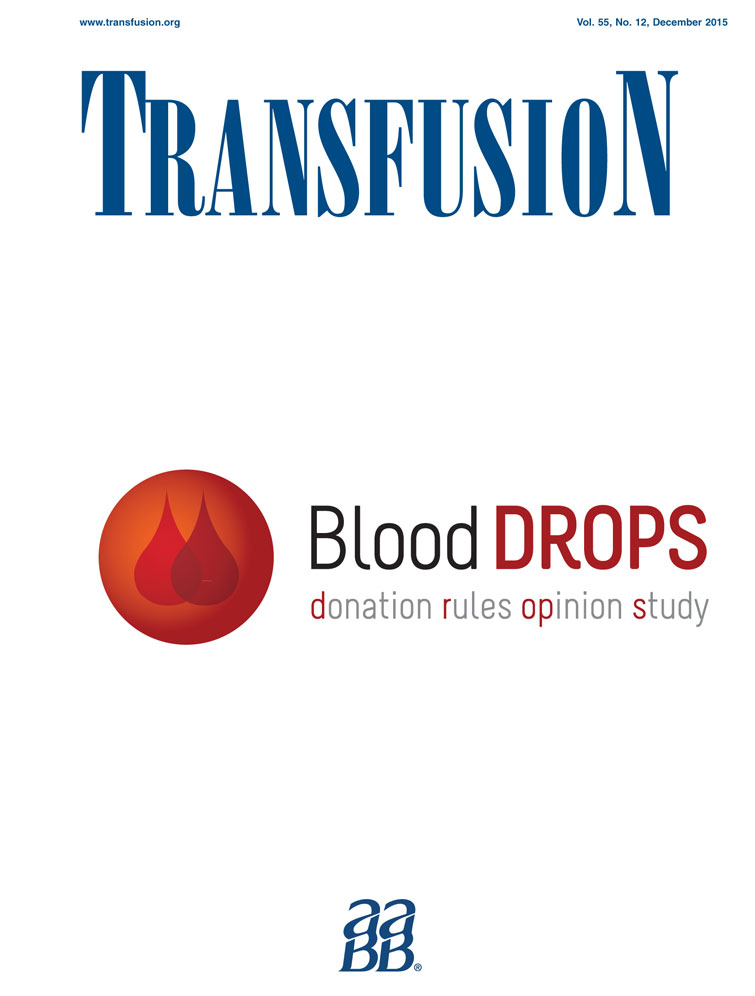The impact of noninvasive, capillary, and venous hemoglobin screening on donor deferrals and the hemoglobin content of red blood cells concentrates: a prospective study
Abstract
BACKGROUND
Hemoglobin (Hb) is screened before whole blood donation to protect donors from anemia. Recently, noninvasive methods have become available for Hb screening in blood donors. We compared a noninvasive, a capillary, and a venous method for Hb screening of blood donors.
STUDY DESIGN AND METHODS
Consecutive donors were prospectively screened using a noninvasive (Masimo Pronto-7), a capillary (HemoCue Hb 301), and a venipuncture-based method as gold standard (Siemens Advia 2120i) for Hb determination. All measurements were performed in parallel and in duplicate. A cutoff Hb value of 125 g/L (females) and 135 g/L (males) was used for donor acceptance.
RESULTS
A total of 553 donors were analyzed; in 38 donors (7%) the noninvasive Hb method was not applicable due to technical reasons. The noninvasive test underestimated (mean bias, −5.9 g/L; 95% limits of agreement, −25.74, 13.88) and the capillary test overestimated Hb values (mean bias, 4.3 g/L; 95% limits of agreement, −8.13, 16.71). Coefficients of variation of duplicate measurements were 1.05 (venous), 2.73 (noninvasive), and 3.23 (capillary). The noninvasive test revealed false low Hb values in 21.2% and the capillary test revealed false high Hb values in 9% of donors compared to the venous method. The negative predictive value of the noninvasive test was 94.3%.
CONCLUSION
The noninvasive Hb measurement is a reasonable first-line approach for predonation Hb screening of blood donors but a second method should be available to retest those not testable with the noninvasive device or with Hb values below the cutoffs.




